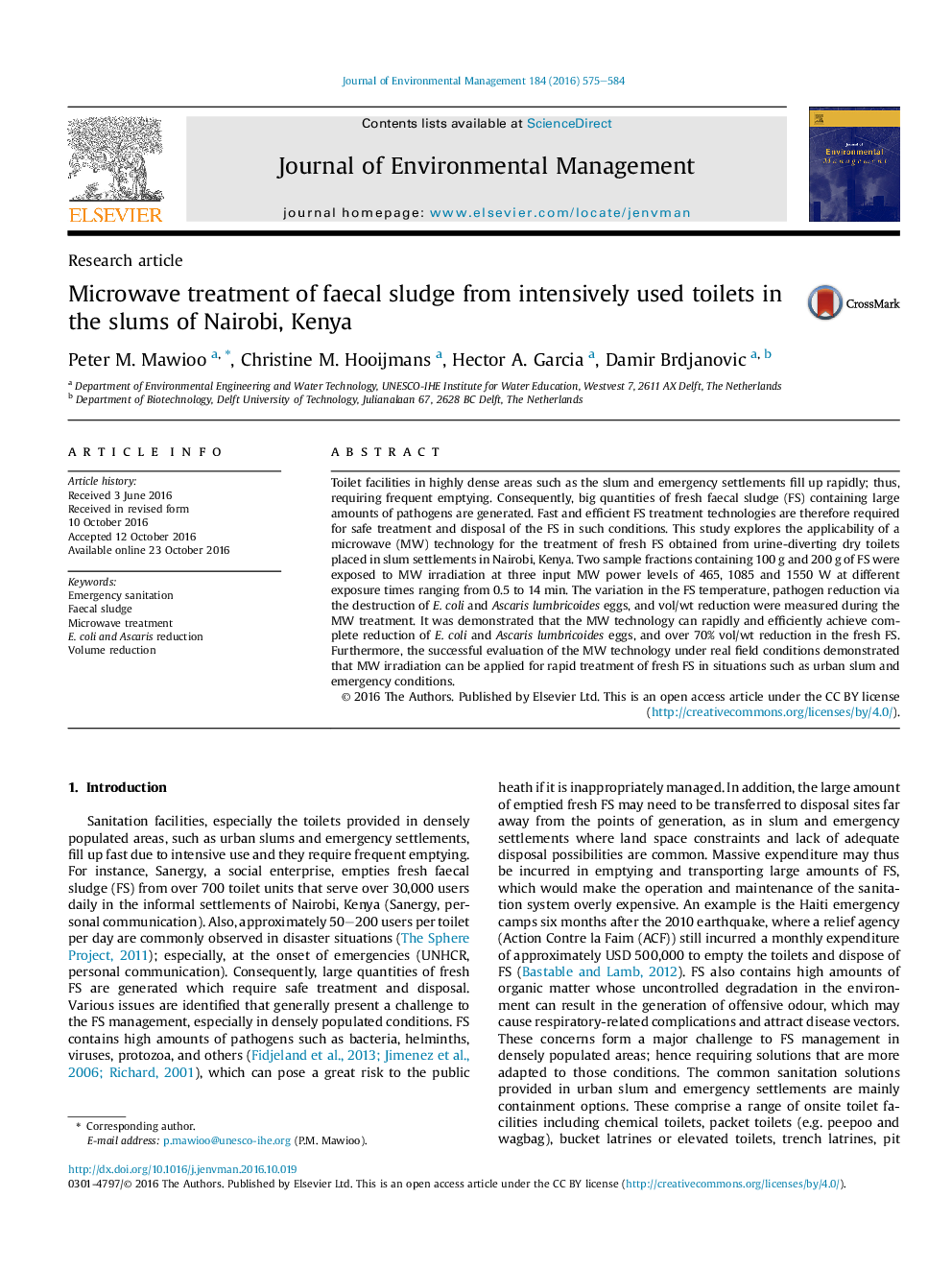| Article ID | Journal | Published Year | Pages | File Type |
|---|---|---|---|---|
| 5117170 | Journal of Environmental Management | 2016 | 10 Pages |
â¢There is lack of appropriate options to treat sludge from intensively used toilets.â¢Microwave treatment is fast and efficient in sludge volume and pathogen reduction.â¢Microwave technology can be applied to treat fecal sludge in slums and emergencies.
Toilet facilities in highly dense areas such as the slum and emergency settlements fill up rapidly; thus, requiring frequent emptying. Consequently, big quantities of fresh faecal sludge (FS) containing large amounts of pathogens are generated. Fast and efficient FS treatment technologies are therefore required for safe treatment and disposal of the FS in such conditions. This study explores the applicability of a microwave (MW) technology for the treatment of fresh FS obtained from urine-diverting dry toilets placed in slum settlements in Nairobi, Kenya. Two sample fractions containing 100 g and 200 g of FS were exposed to MW irradiation at three input MW power levels of 465, 1085 and 1550 W at different exposure times ranging from 0.5 to 14 min. The variation in the FS temperature, pathogen reduction via the destruction of E. coli and Ascaris lumbricoides eggs, and vol/wt reduction were measured during the MW treatment. It was demonstrated that the MW technology can rapidly and efficiently achieve complete reduction of E. coli and Ascaris lumbricoides eggs, and over 70% vol/wt reduction in the fresh FS. Furthermore, the successful evaluation of the MW technology under real field conditions demonstrated that MW irradiation can be applied for rapid treatment of fresh FS in situations such as urban slum and emergency conditions.
Graphical abstractDownload full-size image
